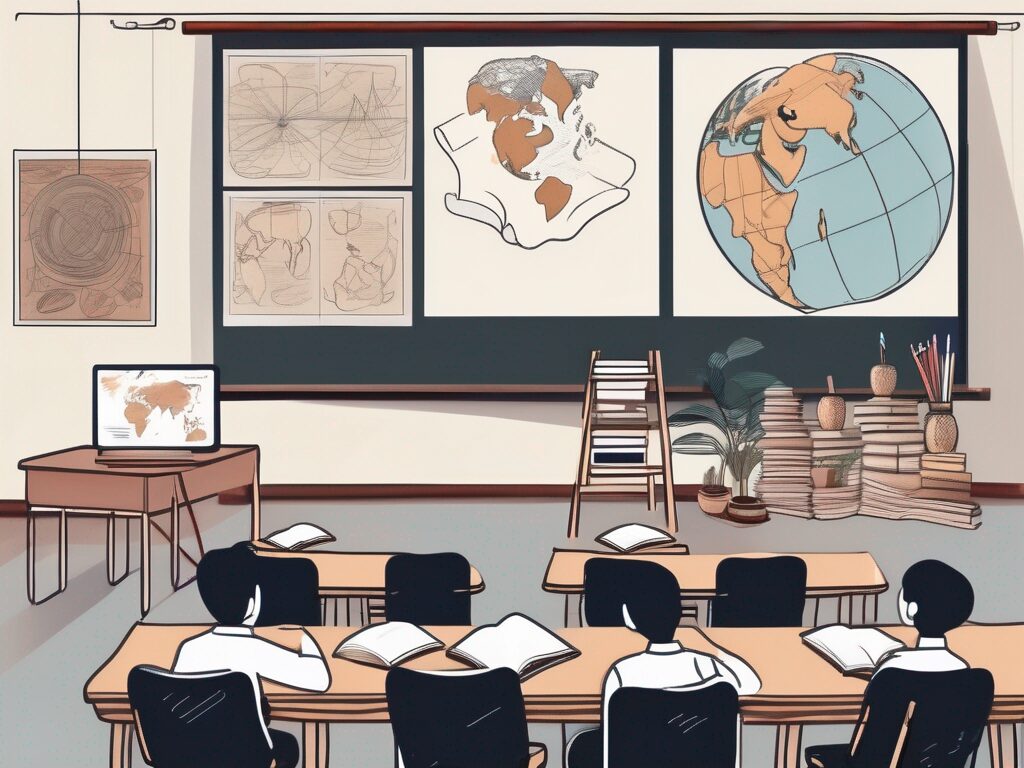Collaborative teaching is a teaching methodology that involves two or more teachers working together to plan, conduct, and evaluate the learning process. It’s a bit like a football team, where each player has a specific role, but they all work together to score goals. In the context of an International Postgraduate Certificate in Education (IPGCE) in Thailand, collaborative teaching can be an effective way to enhance the learning experience for students and improve the teaching skills of educators. This article will explore five strategies for successful collaborative teaching in an IPGCE setting in Thailand.
1. Establish Clear Roles and Responsibilities
Just like in a football team, each teacher in a collaborative teaching setup should have a clear role and set of responsibilities. This is akin to having a goalkeeper, defenders, midfielders, and strikers, each with their own tasks but all working towards a common goal. In a classroom, one teacher might be responsible for planning lessons, another for delivering them, and a third for evaluating student progress. By clearly defining these roles, teachers can work together more effectively and avoid confusion or overlap.
However, it’s also important to remain flexible and adaptable. Just as a footballer might need to step into a different position if a teammate is injured, teachers should be prepared to take on different roles if necessary. This could involve stepping in to deliver a lesson if a colleague is absent, or helping with lesson planning if another teacher is overloaded with work.
2. Foster Open Communication
Communication is key in any team, whether it’s a football team or a team of teachers. It’s important for teachers to regularly communicate with each other about their plans, ideas, and concerns. This could be done through regular team meetings, email updates, or informal chats in the staffroom. Like a team huddle in football, these communication channels can help to keep everyone on the same page and working towards the same goals.
Open communication also involves giving and receiving feedback. Just as a football coach might give feedback to players about their performance, teachers should be open to giving and receiving constructive criticism about their teaching practices. This can help to identify areas for improvement and foster a culture of continuous learning and development.
3. Use a Variety of Teaching Methods
Just as a football team might use a variety of tactics depending on the opposition, a collaborative teaching team should use a variety of teaching methods to cater to the diverse learning needs of their students. This could involve a mix of lectures, group work, practical activities, and independent study. By varying their teaching methods, teachers can keep students engaged and cater to different learning styles.
For example, some students might learn best through visual aids, while others might prefer to learn through practical activities. By using a variety of teaching methods, teachers can ensure that all students have the opportunity to learn in a way that suits them best.
4. Regularly Evaluate and Reflect on Practice
Just as a football team might review their performance after a match, a collaborative teaching team should regularly evaluate and reflect on their teaching practice. This could involve reviewing student feedback, observing each other’s lessons, or discussing teaching strategies in team meetings. Like a post-match analysis in football, this reflection process can help to identify strengths and weaknesses and inform future practice.
Reflection is also an important part of professional development. By regularly reflecting on their teaching practice, teachers can identify areas for improvement and seek out opportunities for further training or development. This can help to ensure that they continue to grow and develop as educators, just as footballers strive to improve their skills and performance.
5. Foster a Collaborative Culture
Finally, just as a football team needs a strong team spirit to succeed, a collaborative teaching team needs a strong collaborative culture. This involves fostering a sense of trust, respect, and mutual support among teachers. Like the camaraderie in a football team, this collaborative culture can help to create a positive and productive working environment.
Building a collaborative culture can involve a range of strategies, from team-building activities to shared decision-making processes. The key is to create an environment where all teachers feel valued and supported, and where collaboration is seen as a positive and beneficial approach to teaching.
In conclusion, collaborative teaching with an IPGCE in Thailand can be a highly effective way to enhance the learning experience for students and improve the teaching skills of educators. By establishing clear roles and responsibilities, fostering open communication, using a variety of teaching methods, regularly evaluating and reflecting on practice, and fostering a collaborative culture, teachers can work together to deliver high-quality education to their students. Just like a well-coordinated football team, a well-coordinated teaching team can achieve great results.
Take Your Teaching Career to the Next Level with iPGCE
Are you inspired to implement collaborative teaching strategies and elevate your professional capabilities in the international education landscape? Join the UK’s #1 Teacher Training Course, the iPGCE, and transform your teaching qualifications into a passport for global opportunities. With our program, you’ll not only enhance your credentials and increase your chances for interviews and promotions, but you’ll also gain invaluable insights into international curricula and join a thriving professional community. Embrace the flexibility of online study and witness a substantial growth in your career and salary. Don’t let inadequate qualifications hold you back any longer. Join the iPGCE program today and become the educator you aspire to be.

